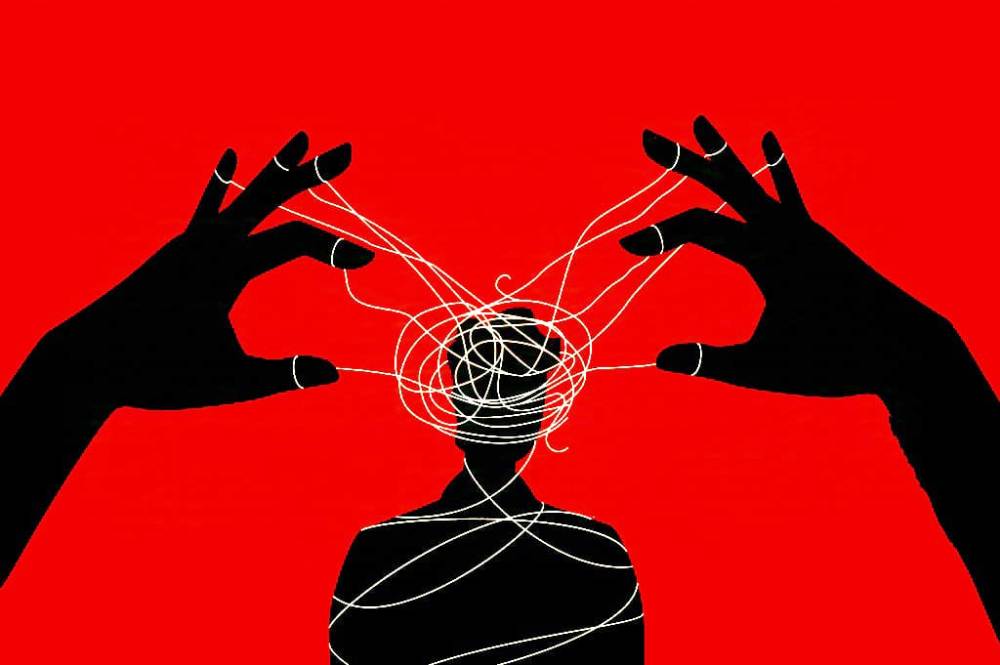by Azra Hussain
Repression is a defence mechanism that blocks anxiety-inducing thoughts from the conscious mind, as described by Sigmund Freud. He identified primal repression and repression proper, influenced by the moral superego. This can lead to neurosis, characterised by anxiety from suppressed memories. Although not officially recognised today, “neurosis” is still used in popular culture. Cognitive-behavioural therapy, particularly Stress Inoculation Training, addresses repressed trauma through relaxation techniques, coping strategies, and exposure, and is effective for Post-Traumatic Stress Disorder (PTSD).

Repression, in psychoanalytic theory, is described as a defence mechanism which “ensures that what is unacceptable to the conscious mind, and would if recalled arouse anxiety, is prevented from entering into it.” People repress things all the time – bad memories, embarrassing moments, anxiety-inducing thoughts – it is pretty much a part of human nature. That which disturbs us is best boxed up and thrown into our unconscious mind along with old phone numbers and obscure science facts.
At first glance, repression might hence seem like a useful feature – if one doesn’t have memories of traumatic experiences, then there will be nothing to cause them anxiety. Unfortunately, it is not as simple as that.
Sigmund Freud, the father of modern psychology and the founder of psychoanalysis, was the one who gave the term repression its psychological context. While attempting to help patients recall memories consciously (as opposed to using hypnosis or in more extreme cases, opioids) through psychoanalysis, he realised that it was very difficult to do so. Try as he might, his patients had remarkable difficulty in recalling things from their past, even more so if they were of the more traumatic variety.
This discovery led Freud to hypothesise about the existence of a psychic (not to be confused with people who claim to have extrasensory abilities) mechanism, or what it was later termed, a defence mechanism, which prevented the conscious mind from accessing the subconscious, and which “pushed the pathogenetic experiences in question out of consciousness.”
Freud would later state that the theory of repression was the “cornerstone on which the whole structure of psychoanalysis rests.” His interactions with patients revealed to him that there are typically two stages of repression: a primal repression and repression proper.
According to Freud, for repression to succeed, there must be some repressed idea already present, which then functions as a magnet of sorts, and draws to itself other memories marked for repression. But when does primal repression occur? “We have reason to assume that there is a primal repression,” Freud says, in which an instinct is denied entrance into the conscious. “With this, a fixation is established,” he said, which remains unaltered, the instinct still attached to it.
During the development of the ego, some basal instincts from the pleasure-driven id are repressed by the subconscious mind, for the individual to become more realistic and free from anxiety. These early repressed thoughts then become the “nucleus of the Unconscious,” a centre that later exerts attraction upon fresh thoughts to be repressed.

Alongside a pull from the nucleus, future thoughts also need a ‘pressure’ from the opposite direction – hence the term repression. This repressive force develops with age and the growth of the superego (working on the principle of morality), which, according to Freud, is internalised due to the threat of punishment for acting immorally or impulsively. Freud believed that the emergence of the superego was what drew the line between primal repression and repression proper, an after-pressure of sorts, making people internalise not only that which is animalistic but also that which causes fear.
The reason why the concept of repression is so fundamental to psychoanalysis is because most in the field attribute a sizable chunk of the mentally ill as suffering from the consequences of this repression, in a state broadly termed as ‘neurosis.’
Neurosis is a term now mostly used by Freudian thinkers to describe mental disorders causing tremendous and often unbearable amounts of anxiety, often due to repressed memories. Despite being extremely popular in the Freudian tradition, the term was originally coined by Scottish doctor William Cullen to describe sensory disorders affected by an improperly functioning nervous system. It was not until the late 1800s that the word became a foundational idea in psychoanalytic thinking, with Freud attempting to treat patients suffering from this affliction.
It is believed that neurosis typically occurs due to repressed thoughts resurfacing into the conscious mind, causing anxiety and cognitive distortions. Despite not being used as a condition or category in the World Health Organization’s International Classification of Diseases (ICD) or the American Psychiatric Association’s Diagnostic and Statistical Manual of Mental Disorders (DSM), neurosis is a term still widely used in popular culture, now sweepingly referring to anxiety and mental collapse.
A therapy based on the principles of Cognitive-Behavioural Therapy was designed by American psychologist Donald Meichenbaumm, called Stress Inoculation Training. This treatment combines negative thought suppression, relaxation, and exposure therapy.
The therapy is divided into four phases – the first phase identifying a patient’s stressors and their response to these. The second phase introduces a plethora of relaxation techniques to reduce anxiety and regulate these symptoms. The third phase deals with specific coping strategies – overcoming stress by either changing the situation or changing their reaction to the situation. The fourth phase of the therapy exposes the patient to real-life scenarios with these stressors to help them cope with their presence in daily life. This therapy is most frequently used in the treatment of Post-Traumatic Stress Disorder (PTSD), which also deals with the repression and resurfacing of trauma.


